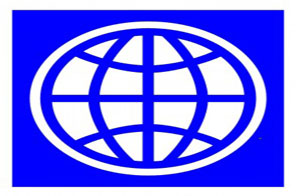World Bank extra aid to upgrade rural roads
KATHMANDU: The World Bank approved $45 million in additional financing to scale up Nepal’s efforts at improving the rural road network.
The Rural Access Improvement and Decentralisation Project (RAIDP) has been upgrading rural roads in 20 of Nepal’s 75 districts since 2005, when the World Bank provided a $32 million grant. The government and participating District Development Committees (DDCs) have provided about $10 million, according to the bank.
The Swiss Agency for Development and Cooperation (SDC) has also provided $2.1 million for the Trail Bridges component of the project. With the new financing, the project will expand its operations to 10 more districts. The additional funds will also help meet cost escalations that have occurred on account of the doubling of input prices since 2005. For example, the cost of reinforcement bars and cement increased by an average of 130 per cent between 2005 and 2007. Costs also increased following an upgrade in technical specification like moving from gravel to low cost black-top roads.
“Nepalis have high expectations of sustained peace and economic opportunities,” said Susan Goldmark, World Bank Country Director for Nepal. “Improving rural roads in these districts will support Nepal’s vision of creating employment, jump-starting economic development, and reducing poverty”.
Of the two project components, the Rural Transport Infrastructure component will rehabilitate and upgrade a further 550 km of existing dry-season rural roads to all-season standard and, in the remote hill districts, upgrade another 140 km of existing rural trails and tracks to dry-season standard. When combined with the original grant, this will result in 1,165 km and 211 km, respectively.
It will also maintain about 4,500 km of rural roads, construct 160 trail bridges and select river crossings, as well as develop small community infrastructures. The additional financing is expected to create 150 days of off-farm employment a year for over 30,000 people.
The second component — Capacity Building and Advisory Services — will support institutional strengthening at the Department of Local Infrastructure and Agriculture Roads (DOLIDAR) and DDCs in the areas of road asset management and District Transport Master Plans. It will also aid the Rural Transport Service Study and its policy recommendations and provide project implementation support.
“Once complete, beneficiaries in the project areas will enjoy a 20 per cent reduction in travel time and a 30 per cent increase in transport services plying the roads,” said Marianne Kilpatrick, Senior Transport Specialist, World Bank.
Approximately 2.4 million people are expected to benefit from RAIDP when this phase ends in 2013. In addition to including 10 more districts in the project, RAIDP intends to increase the number of kilometres upgraded in the original 20 districts.
“The partnership with DDCs has resulted in more efficient use of resources and an increased focus on maintenance,” said Surendra Joshi, Senior Transport Specialist, World Bank.
In the meantime, 45 districts are covered under the Rural Reconstruction and Rehabilitation Sector Development Project (RRRSDP) which is supported by the Asian Development Bank (ADB), the Department for International Development of the UK (DFID) and the OPEC Fund for International Development (OFID).
The RAIDP additional financing is a blend of credit and grant from the International Development Association, the World Bank’s concessionary lending arm.






